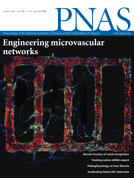Responding to reader requests, I recently published a summary paper on my work on carcinogenesis on this site. The paper was based in part, on my Ph.D. thesis which was published (in short form) as:
The multihit model of carcinogenesis: etiologic implications for colon cancer.
Sutherland JV, Bailar JC 3rd.
J Chronic Dis. 1984;37(6):465-80.
Noting that this paper is the basis of current understanding of cancer induction, I mentioned that recent sequencing of the genome has simply given more weight to the basic hypotheses. A recently published paper replicates my previous work. In fact the coauthor was a reviewer of my earlier paper. The National Academy of Sciences provides access to full text of the article.
Multistage carcinogenesis and the incidence of colorectal cancer
E. Georg Luebeck* and Suresh H. Moolgavkar
Proceedings of the National Academy of Sciences 99:23:15095-15100, November 12, 2002
We use general multistage models to fit the age-specific incidence of colorectal cancers in the Surveillance, Epidemiology, and End Results registry, which covers 10% of the U.S. population, while simultaneously adjusting for birth cohort and calendar year effects. The incidence of colorectal cancers in the Surveillance, Epidemiology, and End Results registry is most consistent with a model positing two rare events followed by a high-frequency event in the conversion of a normal stem cell into an initiated cell that expands clonally to give rise to an adenomatous polyp. Only one more rare event appears to be necessary for malignant transformation. The two rare events involved in initiation are interpreted to represent the homozygous loss of adenomatous polyposis coli gene function. The subsequent transition of a preinitiated stem cell into an initiated cell capable of clonal expansion via symmetric division is predicted to occur with a frequency too high for a mutational event but may reflect a positional effect in colonic crypts. Our results suggest it is not necessary to invoke genomic instability to explain colorectal cancer incidence rates in human populations. Temporal trends in the incidence of colon cancer appear to be dominated by calendar year effects. The model also predicts that interventions, such as administration of nonsteroidal anti-inflammatory drugs, designed to decrease the growth rate of adenomatous polyps, are very efficient at lowering colon cancer risk substantially, even when begun later in life. By contrast, interventions that decrease the rate of mutations at the adenomatous polyposis coli locus are much less effective in reducing the risk of colon cancer.
